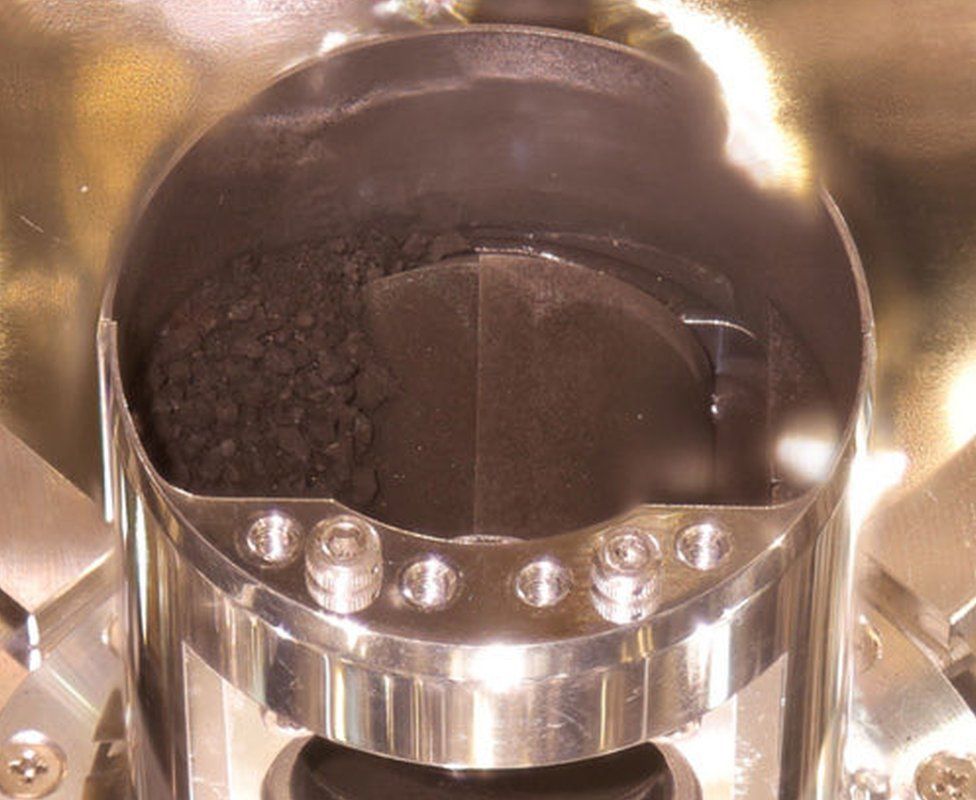Hayabusa-2: Pieces of an asteroid found inside space capsule

(BBC): Scientists have been greeted by the sight of jet black chunks of rock and soil from an asteroid after opening a capsule that returned from deep space a week ago.
It’s the first significant sample of material to be delivered to Earth from a space rock and was grabbed last year by Japan’s Hayabusa-2 spacecraft.
Researchers began opening the capsule on Monday (GMT) in Sagamihara, Japan.
The material was retrieved from an asteroid called Ryugu.
Hayabusa-2 reached the object in June 2018; it is believed to be one of the building blocks left over from the formation of the Solar System.
Scientists at the Japanese Aerospace Exploration Agency (Jaxa) curation facility at Sagamihara have now opened one of three sample chambers inside the capsule.This was hoped to contain particles of rock and soil from Hayabusa-2’s first touchdown on the asteroid in 2019. The spacecraft grabbed the material by firing a tantalum metal bullet into the surface and letting debris float up a collection tube under the low gravity.
Scientists had already been excited when they saw black grains from the asteroid caught at the entrance to the sample catcher (where the material is stored) on Monday. And they were not disappointed when they opened it: Inside was material ranging in size from pebbles to tiny particles of dust.
‘Pristine material’
However, this is just one of three chambers inside the capsule. Sample chamber B should be empty, but chamber C is thought to hold material collected from beneath Ryugu’s surface.
Scientists wanted to collect pristine material from Ryugu that had not been altered by exposure to the environment of space – including its radiation – for aeons. In order to do this, they had to use an explosive charge to propel a copper projectile into the surface of the asteroid.
This blasted a 20m-wide crater in Ryugu, allowing Hayabusa-2 to descend into the crater and grab the pristine particles, depositing them in chamber C.
Scientists should open this chamber in due course.
Jaxa has also announced that gas collected from the capsule is from the asteroid.
It was likely to have been liberated by the soil collected from Ryugu and is the world’s first sample of gas returned from deep space.
Asteroids are leftover building materials from the formation of the Solar System. They’re made of the same stuff that went into making rocky worlds like the Earth, but they continued to roam free, rather than being incorporated into planets.
Ryugu belongs to a particularly primitive class of space rock known as a C-type (or carbonaceous) asteroid.
In the early Solar System, such objects could have delivered much of the Earth’s water along with the ingredients necessary for life to get started.
When the spacecraft arrived at its target in 2018, scientists were surprised by just how dark Ryugu was. Its unexpected hue even forced controllers to adjust the laser altitude sensor used when the spacecraft approached the asteroid’s surface.
The Hayabusa-2 sample capsule returned to Earth on Saturday 5 December, parachuting down safely in the Australian desert near Woomera.

